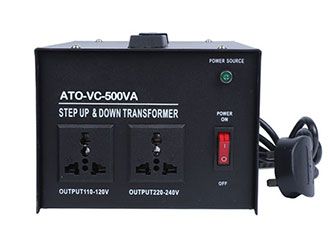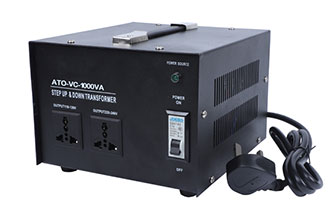A voltage converter is a static electrical device that converts an AC voltage of a certain value into a voltage with the same frequency but different values. Transformers are made of two or more sets of coils wound on the same bobbin or on the same iron core.
Voltage converters are divided into single-phase converters and three-phase converters. Their internal structures are basically the same, which is composed of iron core, winding, insulating structure, lead wire and tap changer. The winding is the circuit of the converter, and the iron core is the magnetic circuit of the converter. The two constitute the core of the voltage converter, that is, the electromagnetic part.
The primary winding and the secondary winding of the voltage converter are equivalent to two inductors. When the AC voltage is applied to the primary winding, an electromotive force is formed on the primary winding, and an alternating magnetic field is generated. The secondary winding is affected by the primary winding. Then, the induced electromotive force with the same law of change of the magnetic field of the primary winding is also generated. So the secondary winding outputs an AC voltage, which is the conversion process of the voltage converter.
The output voltage of the voltage converter is related to the number of turns of the winding. Generally, the ratio of the output voltage to the input voltage is equal to the ratio of the number of turns of the secondary winding (N2) to the number of turns of the primary winding (N1) ; the output current of the voltage converter is inversely proportional to the output voltage.
A common use of the voltage converter is for a device that allows appliances made for the mains voltage of one geographical region to operate in an area with different voltage. Such a device may be called a voltage converter, power converter, travel adapter, etc. Most single phase alternating-current electrical outlets in the world supply power at 210–240 V or at 100–120 V. A transformer or auto transformer can be used; (auto) transformers are inherently reversible, so the same transformer can be used to step the voltage up, or step it down by the same ratio. Lighter and smaller devices can be made using electronic circuitry; reducing the voltage electronically is simpler and cheaper than increasing it. Small, inexpensive, travel adapters suitable for low-power devices such as electric shavers, but not, say, hairdryers, are available; travel adapters usually include plug-end adapters for the different standards used in different countries. A transformer would be used for higher power.
